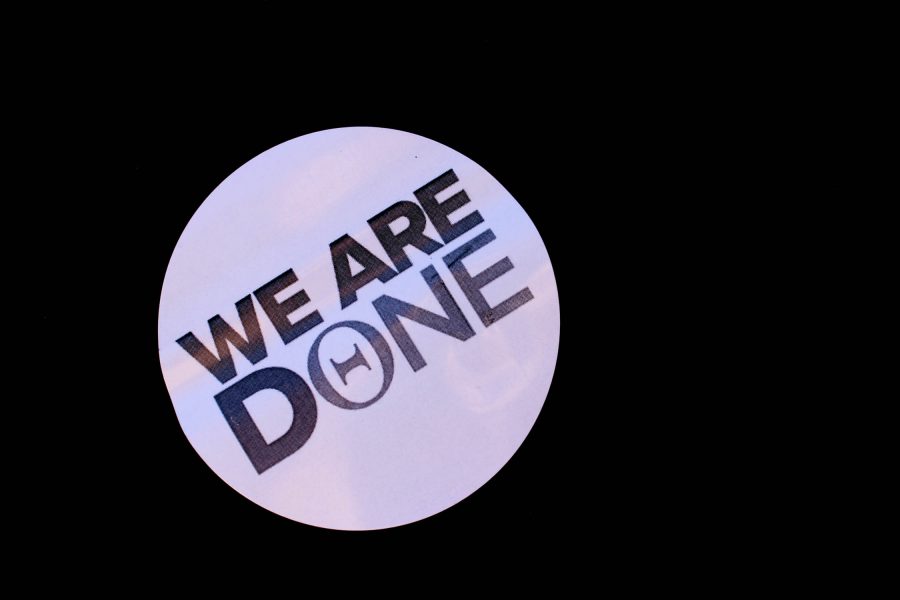Just two months after its initial presentation of demands, the We Are Done movement, with the University of Alabama administration, is on the verge of opening the Intercultural Diversity Center, a student-staffed center dedicated “to serving as a resource and liaison for students, staff and faculty on issues of equality through education, outreach and advocacy.”
The Center, located in the first floor of the Riverside Annex, is the byproduct of conversations between activists with the We Are Done movement and David Grady, UA vice president for student affairs.
“The center basically came from We Are Done,” Kalyn Lee said. “This organization, along with a lot of pieces of the puzzle that helped, but the group that pushed for the necessity of a center as well as a lot of other demands that were proposed.”
The center, independent from We Are Done as an organization, will partner with groups across campus to host events, while student workers will be on site to answer questions and provide students with diversity resources.
“The intercultural diversity center is one way to make people more comfortable, because they can know that this is a safe haven, this is somewhere I know I will be accepted, knowing there is somewhere on campus where you can go if you have a certain experience,” Lee said. “You know there is a certain location where you can speak to someone, or if you want to be around someone who has experienced those same life experiences, this is also place you can go to. Even if you don’t know why certain verbiage is problematic, like you don’t know why it’s bad to call someone the n-word, there are going to be trained staff members who will be here to walk you through how to become a more informed citizen and how you can make yourself a better person.”
Lee and Patterson said the center offers an alternative to The Ferguson Center, which they said is primarily an office building with a food court, as a gathering place for students of all stripes. Unlike resources like the Women and Gender Resource Center or Crossroads, the Center will be centrally located to a student living area, and will maintain different hours, open from 11 a.m. to 10 p.m. from Monday to Thursday, closing at 5 p.m. on Friday and 4 p.m. on Saturday.
Students Lee, Patterson, Amanda Bennett, Steven Becton and Dwyer Freeman worked with Grady, director of housing Steven Hood and assistant vice president Adam Sterritt to select a temporary location, eventually settling on the Annex, while the center awaits a permanent home. While the administrators facilitated placement, the Center’s development has been down to student work, with Lee, Patterson, Bennett and Becton writing mission statements, creating long-term visions, filling the center with art (they’re still accepting material) and determining operating hours, among other things.
“We’ve done everything almost,” Patterson said. We’ve almost laid the strategic plans for the center, because in our interviews for a student worker, we’ve had to think longterm for the center. We’ve been very involved and spearheaded this movement…. It’s been us students pushing for this, with the help of administrators.”
The Center is being temporarily overseen by Dana Bonafacio-Sample, currently the director of the Ferguson Center. While We Are Done and affiliated students gave birth to the center and its operations, the center will be an independent organization after opening. The students said they’re aware of the movement’s polarizing nature and want to give the center a chance to stand on its own.
“We realize that with We Are Done, there are many things that requested, and some of those requests were polarizing to the UA student body, so for that reason, we don’t want to continue associating it with We Are Done, because it’s a center that’s made by students and for students,” Patterson said.
One of the movement’s initial 11 requests was for a safe space for students of color in the Ferguson Student Center. That stipulation touched off controversy over the term “safe space,” a buzzword that has gained traction among critics as exclusionary.
“First of all, for individuals that think that ‘safe space’ is not real in the real world, that’s not true,” Lee said. “There are plenty of safe spaces for individuals to congregate with people who are like them. Take for example, church. That’s a safe space for religious individuals and religious groups. Take any organization that is for specific individuals. The Intercultural Diversity Center is keeping in mind the reality that marginalized groups have to face everyday in the world, but it’s not excluding other groups that don’t have those struggles or face those realities. There’s a difference between a safe space and a segregated space. We are not a segregated space.”
The Center will hold its grand opening at 6 p.m. on February 1 at the Riverside Annex. The ceremony is open to the public.
“I would say, for this center, you don’t have to know someone to come in,” Lee said. “You can just come in. The reason you have the ability to come in is because you’re a person. We value people. We value different identities, we value different backgrounds, different sexualities, different racial groups, different abilities. That’s why it’s called intercultural, because it’s for different people. It’s not exclusive. We have plenty of exclusive places on campus. We don’t want this to be one of them.”









